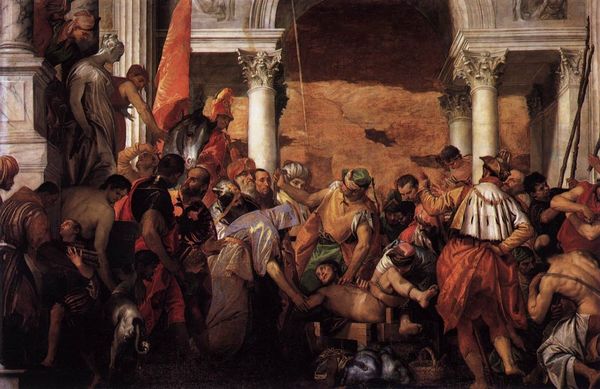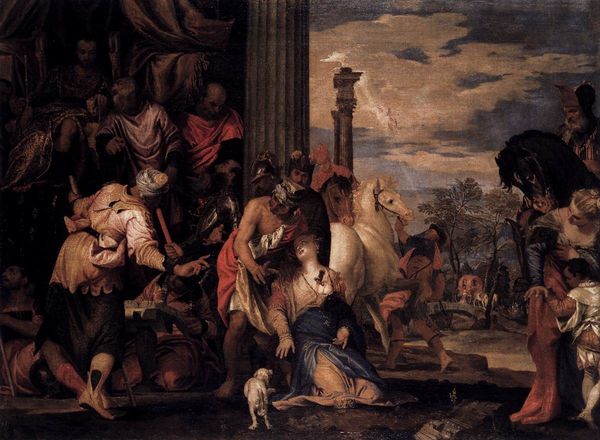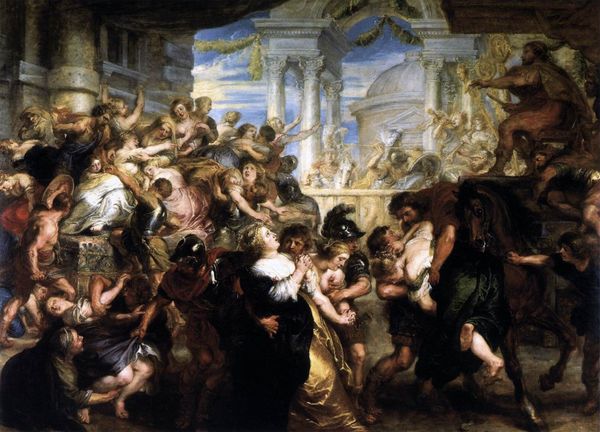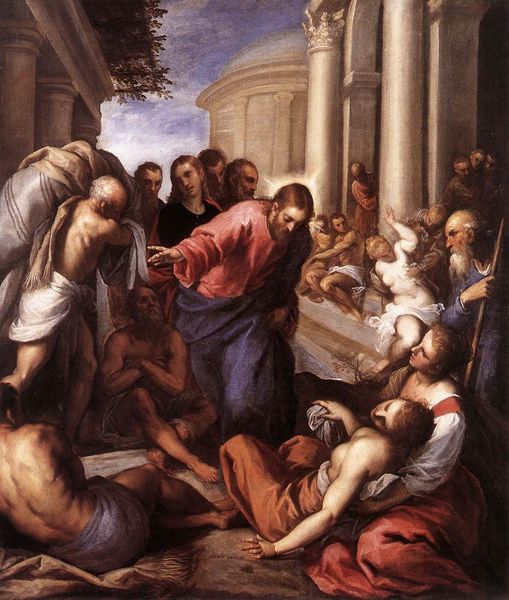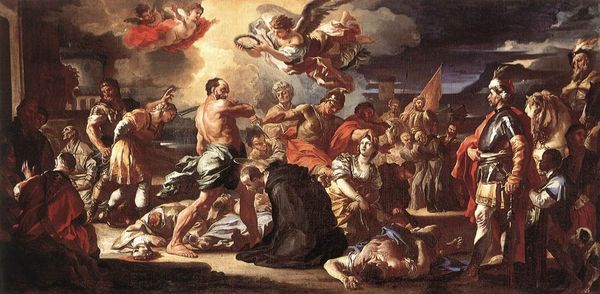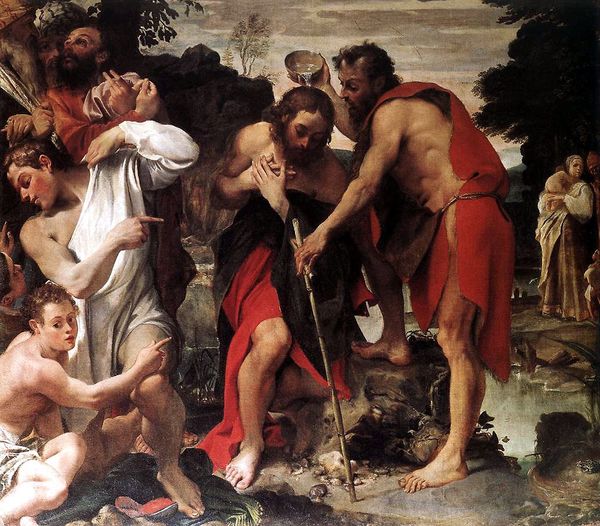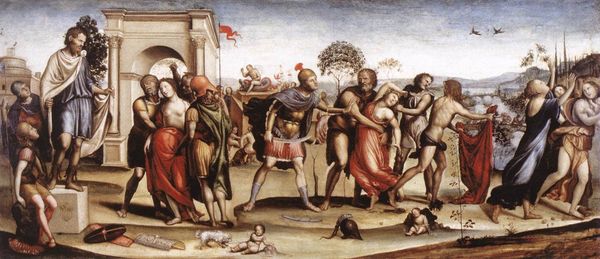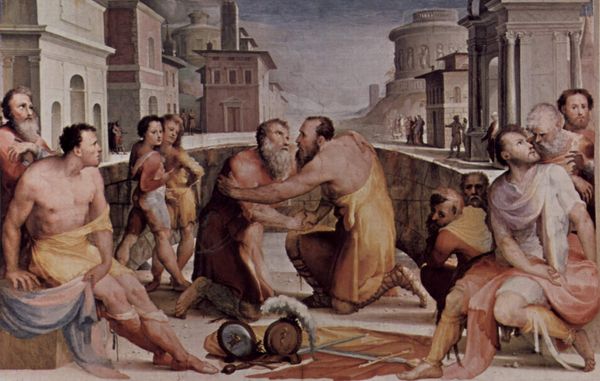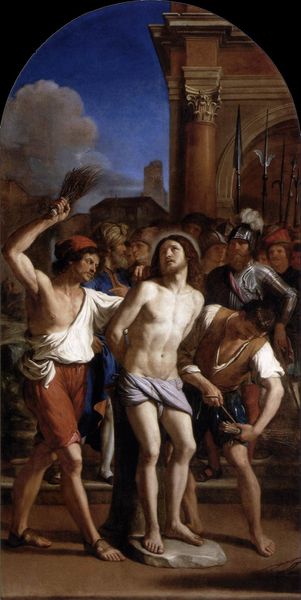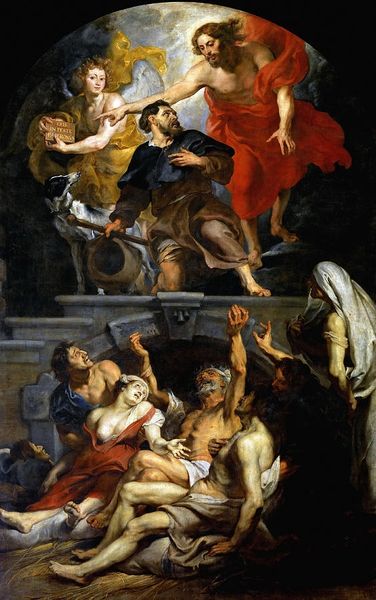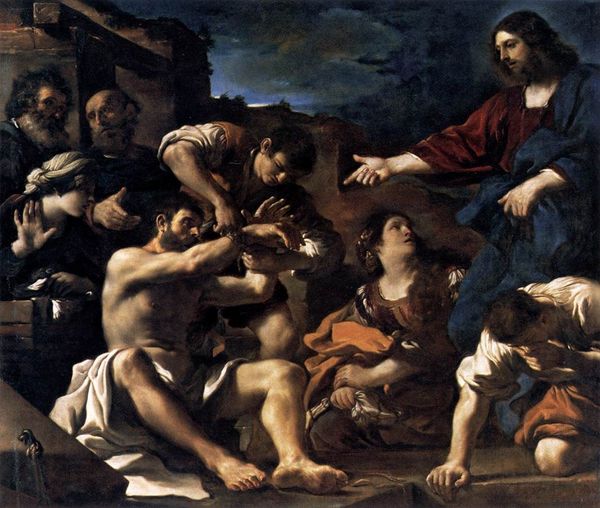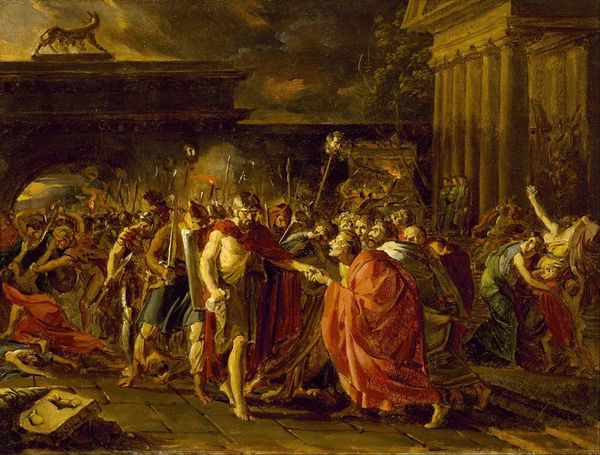
Copyright: Public domain
Editor: We’re looking at Palma il Giovane’s "The Martyrdom of St. Lawrence" from 1575, an oil painting. It's pretty intense—a saint being burned alive on a grill! What strikes me is how almost theatrical it feels, a staged spectacle. What do you see in this piece? Curator: I see the visual representation of power, Editor. Look at the positioning of St. Lawrence. The gaze is directed heavenward in submissive suffering. Giovane uses the visual language of Baroque painting to highlight themes of subjugation, but let's also think about *who* is watching *whom*. Who is directing the composition and our interpretation of it? Editor: You mean how we're positioned as spectators, almost complicit in the violence? I hadn't thought about it that way. Curator: Exactly! And consider the backdrop, the classical architecture looming above. This echoes the weight of empire and its institutions which legitimize violence. Lawrence's martyrdom took place during the reign of Emperor Valerian, which was marked by the persecution of Christians. To me, the spectacle is an affirmation of Roman dominion through the destruction of "others." What do you make of the secondary figures, not only those inflicting pain, but others as well? Editor: Some look almost sympathetic, there's even a child present in the immediate foreground...a complex array of emotional responses for certain. So, it is not just a triumphant or celebratory scene... Curator: Yes. Consider how Giovane presents the moral and psychological burden. By focusing on the spectrum of response, is Giovane indicting this persecution more broadly, not just in the 3rd century but during the Counter-Reformation of his own time? How can visual representation serve as witness against historical atrocity? Editor: I see it now; the artist isn't just depicting a historical event, but prompting us to think about power structures. Thank you for a fascinating insight into this martyr's perspective! Curator: It highlights how crucial is to question the role that the historical conditions of art production play when evaluating artworks!
Comments
No comments
Be the first to comment and join the conversation on the ultimate creative platform.
